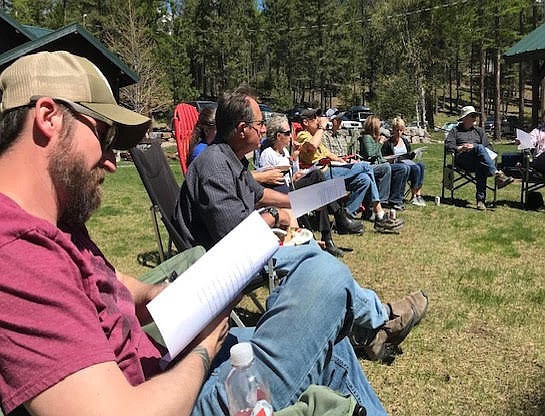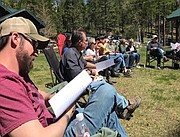Being Bear Aware: It Takes a Community!
I woke from a dead sleep to the sound of gun shots and people shouting. Hopping into my truck, I drove down the road to my neighbor’s house, worried that somebody might be hurt. I learned that despite having several large dogs, black bears had recently been making nighttime raids of their trash container. Gunshots to haze the bears worked initially but quickly wore off when tantalizing scents and the guarantee of a calorie-packed meal outweighed any annoyance from gunfire. At the end of their ropes, when my neighbors heard about the bear-resistant trash container program, they quickly signed up. Now, with their new container in place, they no longer have visits from hungry bruins. They decided to be Bear Aware and in doing so, they made it safer for themselves, for me and all our neighbors, and for the bears.
Peaceful coexistence with bears is possible and it’s being done successfully in many other communities. Being “bear aware” calls for each of us to play a part, not just for bears but for the safety and peace of mind of our neighbors. When one or two neighbors decides to make their property bear wise, it can influence other neighbors to do the same, and so on, and so on. UM social scientists describe this as a “collective action” problem: one where solutions require contributions from many people and where people’s actions affect others. Alex Metcalf, a UM Assistant Professor and co-author of a study on what motivates people to secure bear attractants, says, “The fact that this is a collective action problem – that we’re in it together, that it needs all of us to solve it, that our behavior has impact on our neighbors, too – leads us to the conclusion that what people are doing around us matters and influences our own behavior.”
I have another set of neighbors that also did their part. They wouldn’t have guessed they were contributing to a collective action solution; they simply wanted to protect their animals. They’d had a visit from a grizzly coming around their chicken coup and horse barn. Nothing was damaged or killed, but rather than take a chance, they wisely installed electric fencing around the coup. Safe chickens, safe horses, safe landowners, safe neighbors and safe bears – Done!
I’m grateful to all these neighbors, and to everyone in our larger community, that are doing their part to secure attractants and make sure their properties are “clean camps”. Researchers may call it “collective action,” I call it being a good neighbor. We can be Bear Aware in Bigfork, but it takes all of us caring enough about our neighbors and working as a community!
Help make a difference! Contact Swan Valley Bear Resources (SVBR) at 754-3137 for more information on their bear-resistant trash container program, electric fencing and free property consultations. Contact Bear Aware Bigfork, the newly formed volunteer-based educational arm of SVBR working in the Bigfork and Ferndale communities, at BAB@SVConnections.org for more information or to volunteer. Promptly report when a bear gets into an attractant (including bird feeders) so you can help prevent further conflicts for that bear. Contact Erik Wenum, MT Fish, Wildlife and Parks Bear and Lion Specialist, at 250-0062 or Technician Mackenzie Taylor at 249-4372.
Tina Zenzola is the Volunteer Coordinator of Swan Valley Bear Resources’ Bear Aware Bigfork effort and a member of the Swan Valley Connections Board of Directors.



